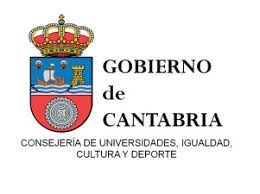El cuento en el cambio de siglo: del ideal reformista al desencanto
DOI:
https://doi.org/10.55422/bbmp.742Palabras clave:
Cuento, Fin de siglo, Reforismo, Regeneracionismo, AnarquismoResumen
El presente trabajo estudia las manifestaciones del cuento del Fin de Siglo que conectan con el denominado por la crítica espíritu del 98. Dentro del contexto socio-político del (fracasado) sistema de la Restauración, el cuento regeneracionista tiene como centro el problema de España y la búsqueda de soluciones que remedien los males nacionales (la corrupción política y el caciquismo, así como determinados "valores" muy extendidos en la sociedad del momento, entre ellos la hipocresía, la doble moral y la infravaloración del trabajo). En algunos casos, el pensamiento utópico (sobre todo el socialismo y el anarquismo) aporta a esta clase de cuentos que tienen un fin reformista determinadas temáticas y motivos, entre ellos la falta de caridad y la indiferencia social, la figura del delincuente, la defensa de la libertad individual y la condena de las instituciones.
Descargas
Publication Facts
Reviewer profiles N/D
Author statements
Indexado: {$indexList}
- Academic society
- Sociedad Menéndez Pelayo
- Editora:
- Sociedad Menéndez Pelayo
Estadísticas globales ℹ️
|
129
Visualizaciones
|
97
Descargas
|
|
226
Total
|
|
Citas
ALTAMIRA, Rafael. (2003). Cuentos de Levante y otros cuentos. Barcelona. Thule.
ALTISENT, Marta E. (1988). «Introducción». La narrativa breve de Gabriel Miró y Antología de cuentos. Barcelona. Anthropos. 11-230.
AMORÓS, Juan Bautista (Silverio Lanza). (2006). ¡Peste de huesos! y otros textos. Ed. Antonio Fernández Molina. Zaragoza. Libros del Innombrable.
ARREGUI ZAMORANO, María Teresa. (1998). Estructuras y técnicas narrativas en el cuento literario de la generación del 98: Unamuno, Azorín y Baroja. Pamplona: Eunsa.Azorín. Ver Martínez Ruiz, José.
BAROJA, Pío. (1900). Vidas sombrías. Madrid. s.n. [Imprenta de Antonio Marzo].
——. (1966). Cuentos. Madrid. Alianza.
DICENTA, Joaquín. (1892). Tinta negra. Madrid. Librería de Fernando de Fé.
DOMÍNGUEZ RODRÍGUEZ, José M. (1989). «Introducción». Obras completas I. El año triste. Silverio Lanza. Madrid. Orígenes. 5-35.
GARCÍA-REYES, José. (1979). Silverio Lanza: Entre el realismo y la generación del 98. Universidad de Salamanca.
GARCÍA-VALDECASAS, Amelia. (1980). «Reivindicación de José Nogales: su figura y su obra literaria». Revista de Literatura. XLII. 83. 93-130.
GRANJEL, Luis S. (1966). «Retrato de Silverio Lanza. Vida y obra de Juan Bautista Amorós». Silverio Lanza. Obra selecta. Juan Bautista Amorós. Madrid/Barcelona. Alfaguara. 9-130.
LIDA, Clara E. (1970). «Literatura anarquista y anarquismo literario». Nueva Revista de Filología Hispánica. XIX. 2. 360-381. DOI: https://doi.org/10.24201/nrfh.v19i2.424
LITVAK, Lily. (1982). «El cuento anarquista. Estudio preliminar». El cuento anarquista (1880-1911). Antología. Ed. Lily Litvak. Madrid. Taurus. 7-50.
——. (1990). España 1900 (Modernismo, anarquismo y fin de siglo). Barcelona: Anthropos.
MACHADO, Antonio. (1989). Poesía y prosa. Tomo III. Prosas completas (1893-1936). Ed. Oreste Macrí. Madrid. Espasa Calpe / Fundación Antonio Machado.
MACHADO, Manuel. (1999). Cuentos completos. Ed. Rafael Alarcón Sierra. Madrid. Clan.
MAINER, José-Carlos. (1972). Literatura y pequeña burguesía en España (Notas 1890-1950). Madrid. Edicusa.
MARTÍNEZ RUIZ, José (Azorín). (1975). Obras completas. Tomo I. Ed. Ángel Cruz Rueda. Madrid: Aguilar.
MIRÓ, Gabriel. (1988). Del huerto provinciano. Ed. Gregorio Torres Nebrera. Badajoz. Universidad de Extremadura.
NOGALES, José. (1926). Cuentos. Madrid. Atlántida.
——. (1988). El ángel de nieve y otros cuentos andaluces. Ed. Amelia García-Valdecasas. Sevilla. Guadalmena.
——. (1992). Cuentos rurales y legendarios. Ed. Amelia García-Valdecasas. Sevilla. Guadalmena.
PEDRAZA JIMÉNEZ, Felipe y Milagros Rodríguez Cáceres. (1982). Manual de literatura española, IX. Generación de fin de siglo: prosistas. Tafalla. CÉNLIT Ediciones.
PICÓN, Jacinto Octavio. (1892). Novelitas. Madrid. La España Editorial.
RÓDENAS DE MOYA, Domingo. (2006). «El arte narrativo de un titán». Abel Sánchez, San Manuel Bueno, mártir, Cómo se hace una novela y otras prosas. Miguel de Unamuno. Barcelona. Crítica. VII-CVII.
ROMERO TOBAR, Leonardo. (1977). «La novela regeneracionista en la última década del siglo». Estudios sobre la novela española del siglo XIX. Eds. Mercedes Etreros, María Isabel Montesinos y Leonardo Romero Tobar. Madrid. CSIC, Anejos de Revista de Literatura. 135-209.Silverio Lanza. Ver Amorós, Juan Bautista.
STEVENS, Harriet S. (1974). «Los cuentos de Unamuno». Miguel de Unamuno. Ed. Antonio Sánchez Barbudo. Madrid. Taurus. 297-319.
TORRES NEBRERA, Gregorio. (1988). «Prólogo». Del huerto provinciano. Gabriel Miró. Cáceres. Universidad de Extremadura. 7-72.
TRIGO, Felipe. (1998). Cuentos ingenuos. Ed. José María Fernández Gutiérrez. Madrid: Clan.
UNAMUNO, Miguel de. (1960). Cuentos. Ed. Eleanor Kraune Paucker. Madrid. Minotauro.
VVAA. (1982). El cuento anarquista (1880-1911). Antología. Ed. Lily Litvak. Madrid. Taurus.
Descargas
Publicado
Cómo citar
Número
Sección
Licencia
Derechos de autor 2022 Ana Casas

Esta obra está bajo una licencia internacional Creative Commons Atribución-NoComercial 4.0.







